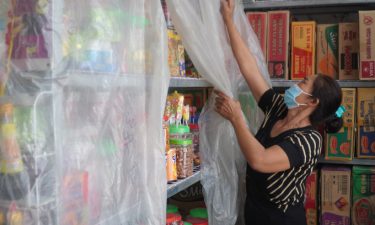
|
The EU – Vietnam Free Trade Agreement (EVFTA) has provided the Vietnamese agricultural sector with favourable opportunities for promoting export growth, while also posing challenges in terms of the implementation of the agreement. |
|
However, these challenges are also an important lever, helping the country’s agricultural sector be more mature in its integration process on the basis of promoting restructuring via improving product quality and deep processing towards an organic and modern agricultural system. Promoting the processing industry The EVFTA is the free trade agreement (FTA) with the highest level of commitments for Vietnam among all signed FTAs thus far, with more than 99% of import tariff lines between the two sides being eliminated across a 7-10-year roadmap. In particular, tax rates applied on many agricultural products that Vietnam has advantages in producing and exporting, such as rice, seafood, coffee and cocoa, will be cut immediately or in a short time. Currently, the EU’s importation of agricultural, forestry and fishery products accounts for about 8.4% of the total. Therefore, Vietnam’s agro-forestry and aquatic products still have plenty of room for export growth in this market. However, Europe prefers processed products, so in order to increase the quantity of goods as well as export turnover, the agricultural sector needs to focus on strongly developing the processing industry in the coming time. Specifically, Vietnam’s tropical fruit products are very welcome in Europe but the geographical distance makes it difficult to transport and preserve fresh produce. Therefore, the development of post-harvest preservation and processing technologies is the “golden key” to help Vietnamese fruits penetrate the EU market, especially in the context of the tax rate of 85.6% of processed fruit and vegetable products from Vietnam to the EU having been reduced to 0% once EVFTA came into effect. However, at present, Vietnam’s export of processed fruits and vegetables accounts for less than 19% of the total export value of vegetables and fruits, so if these products do not increase rapidly, it is likely the fruit and vegetable sector will miss out on a sizeable proportion of the tax advantages that EVFTA offers . Chairman of the Board of Directors of the Dong Giao Food Export Joint Stock Company Dinh Cao Khue said that according to statistics, there are currently more than 150 fruit and vegetable processing establishments on an industrial scale with total capacity of more than 1 million tonnes of product per year, but the processed products sector is still small, accounting for only about 5-10%, while the average designed capacity utilisation rate is only 56.2%. Meanwhile, processing plays a very important role in agriculture. In addition to meeting the tastes of European consumers, processed products, especially processed fruits, also have a long shelf life, thus avoiding losses where they cannot be exported. This was most clearly demonstrated during COVID-19 outbreak peaks, when fresh fruit exports were jammed, but processed products were still exported smoothly, even strongly welcomed due to the fear of using fresh goods by consumers globally. Along with fruit, rice, seafood, pepper, cashews and wood also face high requirements for deep processing to increasing their output and export value to the EU market. In fact, the export of wood products could grow even more strongly if the processing industry reached a higher level of proficiency. However, at present, domestically planted wood material is still low, mainly serving the exploitation of young timber to make raw materials for paper, wood chips and pellets. Meanwhile, the large timber material areas are mainly concentrated in the northern mountainous provinces and on the central coast, but these areas have very few processing enterprises, making the production of refined wood products very limited, not to mention most Vietnamese wood processing enterprises are small and medium in size, while the number of businesses with a design capacity of less than 500 m3 of log timber per year accounts for only 47%. According to the Ministry of Agriculture and Rural Development (MARD), most current agricultural products are still primary products with low added value, accounting for 70-85%, while processed products with high added value account for only 15-30%. In particular, processing technologies are still outdated, with the equipment innovation ratio of processing facilities at only 7% a year. Therefore, the EVFTA with its high demands on deeply processed products has become a great driving force for domestic businesses to build sustainable raw material areas and innovate with processing technologies in order to diversify products in line with the needs of the European market. From which, they could form clusters linking production, preservation, processing and consumption of agricultural products together, in association with concentrated raw material areas in order to create products of equal quality, with traceability and assurance of all factors related to food safety, labour and the environment, according to the commitments in the EVFTA. Boosting organic agriculture Currently, the global market for organic agricultural products is about US$120 billion, half of which is in the European market. Europe is the largest consumer of organic products in the world, of which organic nuts, spices and fruits are the Vietnamese products currently favoured by the EU. According to the online offices of the Vietnam Trade Offices in Belgium, Luxemburg and the EU, in 2019, the EU imported 3.24 million tonnes of organic agricultural products, an increase of 0.4% as compared to 2018. Organic agricultural products account for about 2% of the total number of agricultural products imported to the EU, especially due to the fact that processed products still dominate and have a total value 15% higher than raw products. In particular, tropical fruits, nuts and spices were the organic products most imported into the EU in 2019, accounting for 27% of total organic imports (0.9 million tonnes). Therefore, when the EVFTA came into effect, it opened the door for Vietnam’s organic agriculture sector, offering a “unique” opportunity for the rapid and strong development of organic agricultural products to best meet the product quality requirements of the EU market, while at the same time increasing competitiveness countries, especially in terms of rice, shrimp, fruits and spices. Organic agricultural products must meet many strict requirements but in return, their export value is very high. For example, for organic cinnamon spice, in the EU market, one tonne is priced US$1,000 higher than that of regular cinnamon. According to general calculations, promoting organic agriculture would help Vietnamese agricultural products increase in value by 1.5-1.8 times as compared to conventional production. To realise that value, the Director of the MARD’s Crop Production Department Nguyen Nhu Cuong said that Vietnamese agriculture needs to make rapid changes from the traditional mode of production to standard-based farming, covering water and land sources and the use of agricultural materials, such as fertilisers and pesticides. The minds of managers, businesses and farmers also need to be thoroughly “refreshed”. Instead of chasing output, it is a must to prioritise quality and add value to agricultural products. These changes can be realised, because at the end of June 2020, an organic agriculture development project for the 2020-2030 period was approved by the Government. Specifically, it sets targets such as by 2025, the area of agricultural land for organic production will reach 1.5-2% of the total area of agricultural land; the area of organic cultivated land will account for more than 1% of the total cultivated land focussed on key crops such as rice, vegetables of all kinds, fruit trees, tea, pepper, coffee, cashew and coconut; and the area of organic aquaculture will be about 0.5-1.5% of the total area of aquaculture. These goals are all geared towards the increasing demand for organic products from the EU as well as from other countries around the world. MARD Deputy Minister Tran Thanh Nam also assessed that organic agriculture is a growing trend, one which will develop rapidly in the near future, so Vietnam must be determined to build its organic agriculture with a production level on par with advanced countries. Accordingly, Vietnam aims to promote the training of staff for the management, inspection and supervision of organic agricultural product certification organisations from ministerial to local level. In addition, training courses have been held for businesses, producers and traders of organic products to improve the quality of human resources in the field. It can be seen that although the EVFTA has only been valid for a very short time, it has created new “waves” of positive change for the entire Vietnamese agricultural sector. Although there are still many difficulties and challenges ahead, with a willingness to overcome these obstacles, great expectations for the country’s agriculture originating from EVFTA can come true soon. According to the MARD, in 2019, the country exported 150,000 tonnes of organic agricultural products to Europe. This is a relatively modest number compared with the market’s demand for more than 3 million tonnes of organic products per year, so there is significant room for the organic agricultural products of Vietnam to enter the EU market. The country has so far about 240,000 ha of organic farming space, with the participation of nearly 20,000 farmers across 46 provinces and cities. Besides these, there are about 160 enterprises producing and trading organic products with an annual export turnover of about US$335 million. Vietnamese organic agricultural products have been exported to 180 countries around the world, including selective markets such as the US, EU, Japan, the Republic of Korea, Russia and Singapore. Source: Nhan Dan Online |


